
Your cold weather dog walking tips

Philippa Short
18 December 2021 | 6 minutes read
Does the uncertainty of not knowing whether to walk your dog in wintry weather drive you barking mad? Dog training and behaviourist expert Philippa Short shares her top tips for keeping your dog warm and safe on winter walks.
Table of Contents
- When to stay away from walking your dog in cold weather
- How long should you walk a dog in cold weather?
- What should dog walkers wear in cold weather?
- Does cold weather hurt dogs’ paws?
- Can dogs walk in the snow?
- Keeping dogs outside in cold weather
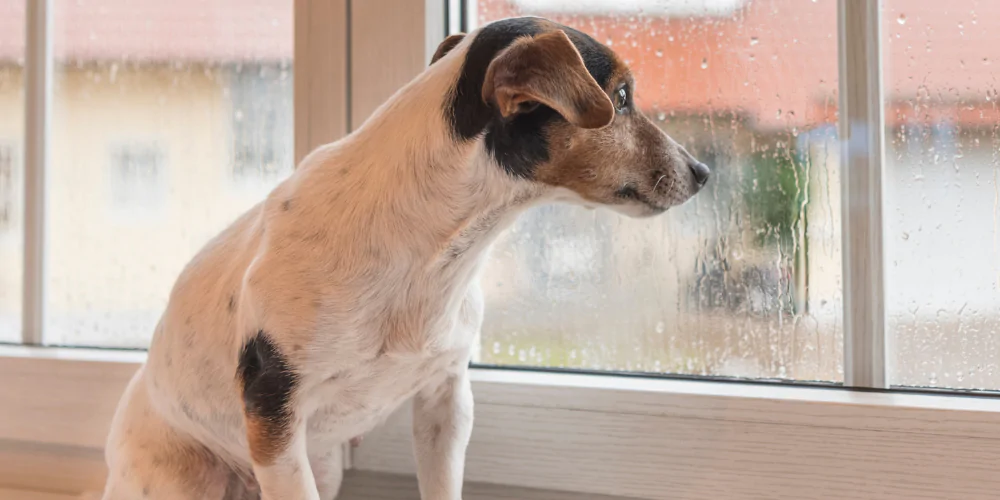
When to stay away from walking your dog in cold weather
First things first – look outside at the weather. If it’s snowing, raining heavily or hailing, don’t take your pup out. If hail is painful to human skin, it’s certainly not going to feel nice for your dog.
If you get caught in any of these conditions after you’ve already set off on your walk, try and find shelter until it stops. Turn back if you’re close enough to home or your car and it’s safe to do so.
Has harsh weather made going out a no-no? There’s plenty of other indoor enrichment activities to keep your dog entertained. You could try:
- Setting up a (safe) obstacle or agility course in the house.
- Playing tug of war with their favourite rope toy.
- Hiding toys and treats around a room and sending them on a treasure hunt.
- Giving them a puzzle toy filled with their favourite treats.
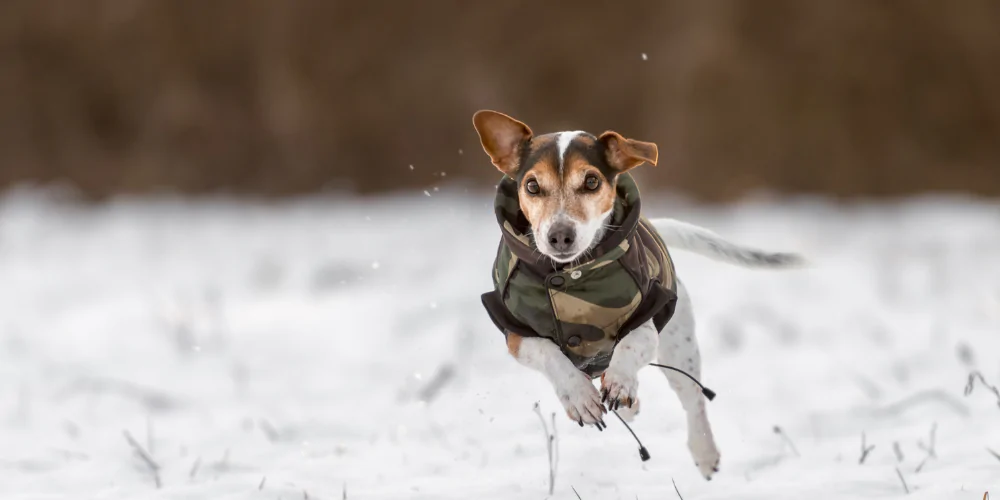
How long should you walk a dog in cold weather?
How long you should walk a dog in cold weather depends on:
- The age of your dog.
- Their coat type.
- Their overall health.
- Your dog walking equipment and clothing.
If your dog has a weatherproof coat they’re comfortable wearing (and fits properly without restricting their movement or breathing), then walks can be longer. Don’t have a coat or their fur isn’t thick enough to keep them warm? You may need to limit their walk to a brisk five minutes, or don’t walk them at all.
The easiest way to see if your canine could brave the cold is by letting them take the lead (well, figuratively speaking anyway). You’ll be able to tell that it’s too cold for them because they’ll look uncomfortable or visibly shake. Rather than distress them, try some energetic indoor play with your pooch instead.
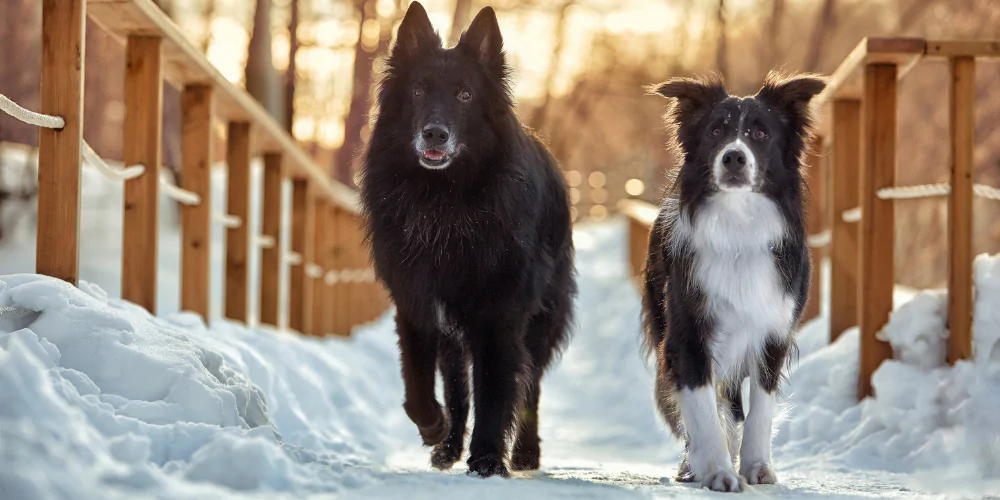
What should dog walkers wear in cold weather?
If going out, dog walkers should:
- Wear appropriate footwear with grips for added protection. If your dog gets excited and you lose your grip, they could accidentally pull you over – we don’t want any injuries.
- Think about the route and conditions of the walk. Where you’re walking could make a real difference to the effort your dog will put in. For example, if there’s a lot of mud around, your dog will need to use their muscles more.
- Bring a pet first aid kit along, just in case. If you can attend a pet first aid course when you have the opportunity, even better.
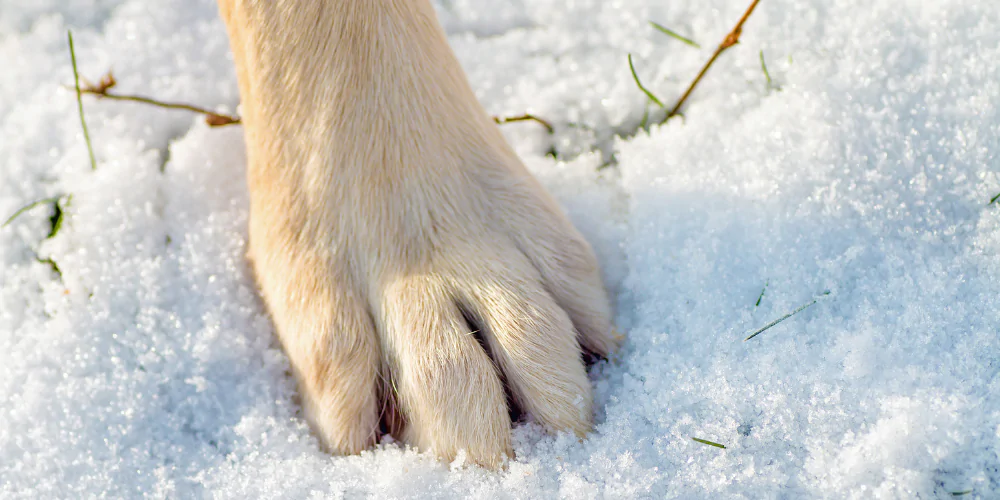
Does cold weather hurt dogs’ paws?
Many pups are able to safely walk in cold weather without it hurting their paws. What you’ll want to watch out for is your dog slipping in muddy or icy conditions. Dogs with arthritis may have a flare-up if they skid around a lot on mud or ice.
If you think your dog has injured itself or is showing signs of pain and distress from an arthritis flare-up, speak to a vet. With a Petsure policy, you can video chat with a FirstVet vet any time of day for advice and treatment recommendations.
Another thing to keep in mind during colder weather is your dog getting muscle injury from tensing up their body. To help prevent this:
- Allow your dog to warm up for the first three-five minutes of their walk by keeping them on the lead.
- If your dog has walked on rock salt, wash their feet in warm water as soon as they’re home.
- If untreated, rock salt may form painful blisters on the pads of your pet’s paws. Licking the rock salt could also make them unwell.
> The risk of Alabama Rot during cold weather dog walks
While the cause of Alabama Rot is unknown, it’s more prominent in winter months when dogs roam around in mud and woodland. To avoid this illness, be sure to wash your dogs legs and feet after they’ve visited these kinds of areas.
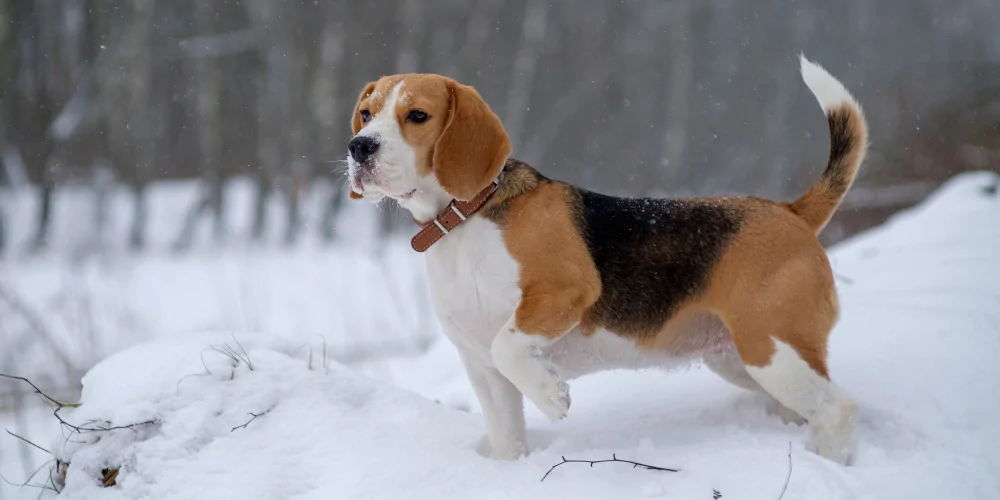
Can dogs walk in the snow?
Dogs can walk in the snow, but always be wary of what could be covered up by the snow. Think possible broken or hazardous objects and uneven surfaces. If in doubt, keep them on the lead. Steer clear of walking in areas where the snow is thicker than two inches deep, just to be on the safe side.
Snow could also get trapped and build up in the fur between your dog’s paws and this could be quite painful and tricky to remove. Take preventative steps by giving their paw fur a trim before heading out. Gently dip their paws in a bowl of warm water when you get back to help defrost any trapped snow and ice, then pat dry.
> Can dogs eat snow?
As it’s difficult to tell who or what’s been there before you, try not to let your dog eat snow. There may be something hidden within that icy blanket that’s not safe to swallow.
Having your dog’s favourite treats to hand could help distract them from chomping down on snow.
It’s also important to be aware of antifreeze during winter months. Antifreeze can pool under cars into a highly toxic puddle, and your pup’s snoot may be attracted to its scent. As much as possible, keep your dog from sniffing or licking areas where cars have been parked.
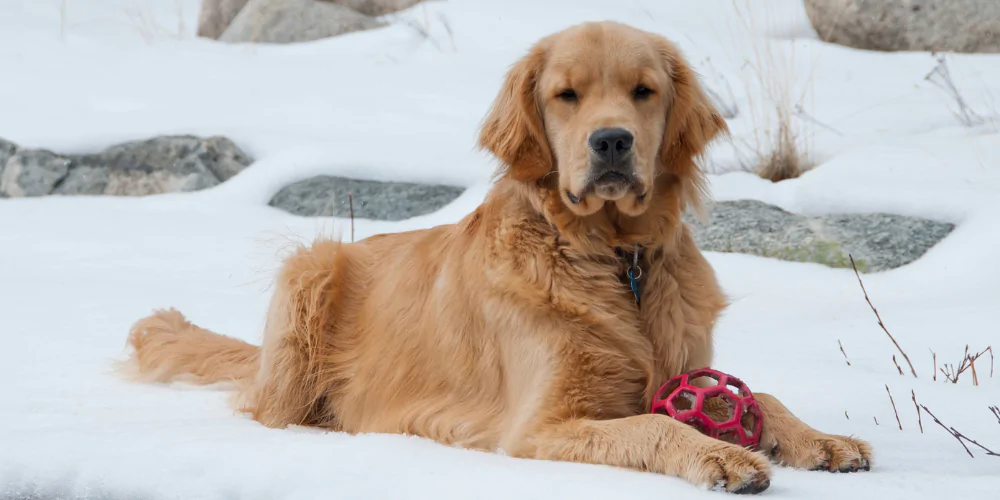
Keeping dogs outside in cold weather
It’s never recommended to keep your dog outside in the cold weather for long periods of time. Winter walks can get messy, so:
- Get towels ready to pat down your pup as soon as you return home.
- Pack extra towels and jumpers in the car if driving somewhere further afield. This way your dog won’t be sat damp and wet until they get home.
- Once you’re home, make sure fur and paws are dry and clean as soon as possible.
- Properly dry any leads, harnesses, collars, and coats so they’re all comfy and ready for your next adventure.
With a Petsure lifetime dog insurance policy, you could have peace of mind that your dog is covered in an emergency.


